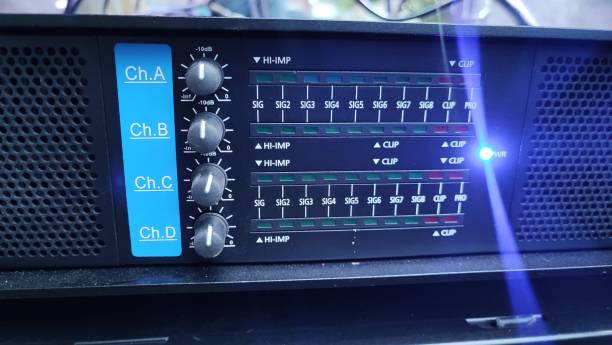What Is a Digital Sound Processor?

The world of audio is undergoing a silent revolution. With rising demands for crystal-clear sound in home theaters, gaming setups, professional studios, and smart devices, digital audio technology has taken center stage. At the heart of this evolution is the Digital Sound Processor (DSP), or as it’s creatively being rebranded in some circles, the Digital Sound Processor.
In this article from Tech Digital Times, we break down what DSPs do, why they’re more important than ever in 2025, and how they’re reshaping the future of sound.
What Is a Digital Sound Processor (DSP)?
A Digital Sound Processor is a device that processes audio signals digitally. It converts analog sound into digital data, manipulates it with powerful algorithms, and converts it back into analog output, considerably enhancing sound quality and control.
Key DSP Functions:
- Equalization (EQ): Tailors audio frequencies
- Compression: Balances volume levels
- Filtering: Removes unwanted noise or frequencies
- Reverb & Echo: Adds space and depth to sound
- Crossover Management: Splits audio for different speaker ranges
DSPs are found in car stereos, smartphones, streaming setups, and professional sound systems, wherever significant sound matters.
How Does a DSP Work?
The mechanism is simple but powerful:
DSP Workflow:
- Input Conversion: Analog audio is digitized via an Analog-to-Digital Converter (ADC).
- Digital Signal Processing: The DSP applies real-time modifications via advanced algorithms.
- Output Conversion: The modified signal is reconverted to analog through a Digital-to-Analog Converter (DAC).
This gives producers, engineers, and even casual users precise control, without degrading sound quality.
Advanced DSP Features in 2025
In 2025, DSPs are smarter, faster, and more customizable than ever.
1. Real-Time, On-the-Fly Adjustments
Ideal for live concerts, gaming, or video calls, these changes occur at the sample level for ultra-fast responsiveness.
2. Multi-Channel Processing
Modern DSPs support formats like Dolby Atmos and DTS: X, processing multiple channels for immersive 3D soundscapes.
3. App-Based Configuration
DSP settings can be fine-tuned via mobile apps, which are perfect for adjusting car audio systems or home theaters.
4. AI-Powered Sound Tuning
Artificial intelligence helps DSPs adapt to room acoustics, user preferences, and real-time ambient noise conditions.
Key Use Cases for DSPs in 2025
1. Automotive Sound Systems
Whether you’re driving a compact hatchback or a luxury SUV, a DSP can craft studio-level sound clarity on the road.
2. Home Theater Experiences
Control speaker output and timing to simulate cinematic sound from the comfort of your living room.
3. Smart Speakers & Voice Assistants
Better noise filtering = better voice command recognition and user interaction.
4. Pro Audio Production
In studios, DSPs power mixing, mastering, and live recording with extreme control and minimal distortion.
Why DSPs Are Crucial in 2025
Audio isn’t just entertainment, it’s content, communication, and commerce.
With Google’s May 2025 SEO update emphasizing user experience, high-quality audio becomes critical for:
- Content creators (podcasts, YouTube, webinars)
- Remote workers & learners (Zoom, Teams)
- E-commerce platforms (voice-assisted browsing)
- Virtual/Augmented Reality (spatial audio environments)
Benefits:
- Enhanced clarity for online media
- Noise reduction for hybrid work setups
- Accessibility for users with hearing impairments
- Immersion in gaming and VR/AR
Top Digital Sound Processors in 2025
1. Alpine PXE-X09
- 16-band parametric EQ
- Tuning via Bluetooth app
- High-end optical input/output
2. JL Audio TwK-88
- 24-bit DAC
- 8-channel DSP with phase correction
- PC-based software control
3. AudioControl DM-810
- 96 kHz HD audio support
- Smart UI for tuning
- Seamless integration with OEM systems
Find complete reviews and updated buyer guides at Tech Digital Times for buying a digital sound processor.
Future DSP Trends to Watch
1. AI + Machine Learning Integration
Auto-adjust sound based on user behavior and room layout.
2. Web-Based Audio Processing
Cloud updates and remote tuning are now standard.
3. Smart Ecosystem Integration
DSPs connect to IoT hubs, gaming consoles, and home assistants.
4. Eco-Conscious Design
Recycled components and energy-efficient processors appeal to green-tech consumers.
Digital Sound Processor: FAQs
Q1: How is a DSP different from an amplifier?
An amplifier boosts volume; a DSP shapes and improves the sound quality via algorithms.
Q2: Do I need a DSP for my car audio?
DSPs improve clarity, balance, and staging if you’ve upgraded speakers or care about sound quality.
Q3: Will DSPs work with factory head units?
Yes. Many DSPs integrate seamlessly with OEM systems without replacing the original stereo.
Q4: Are DSPs only for professionals?
Not at all. Many consumer-level DSPs are easy for hobbyists to install and configure.
Q5: Is it worth investing in a DSP in 2025?
Absolutely. Audio quality matters more than ever, whether for streaming, content creation, gaming, or communication.
Final Thoughts: Why Digital Sound Processors Deserve Your Attention
In 2025, digital sound processors will not be a luxury but a necessity. From immersive entertainment to professional-grade production, DSPs elevate the quality and control of your audio experience.
So, whether you’re a gamer, a content creator, or just someone who values clear and impactful sound, it’s time to consider how a DSP can enhance your audio.
Stay tuned with Tech Digital Times for the latest DSP innovation, reviews, and hands-on guides.
